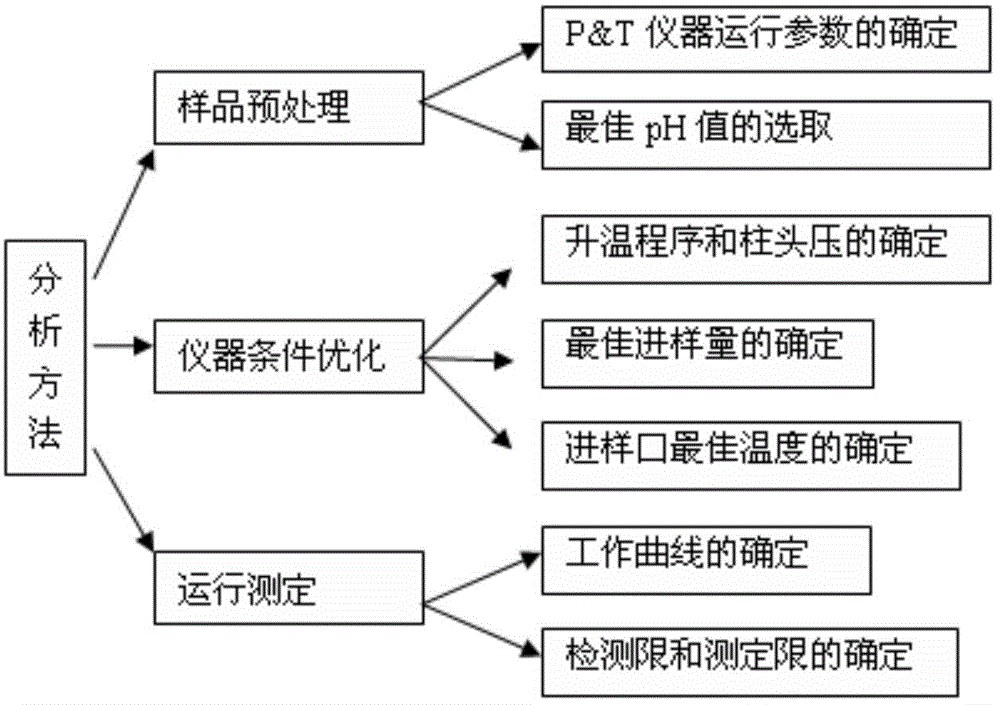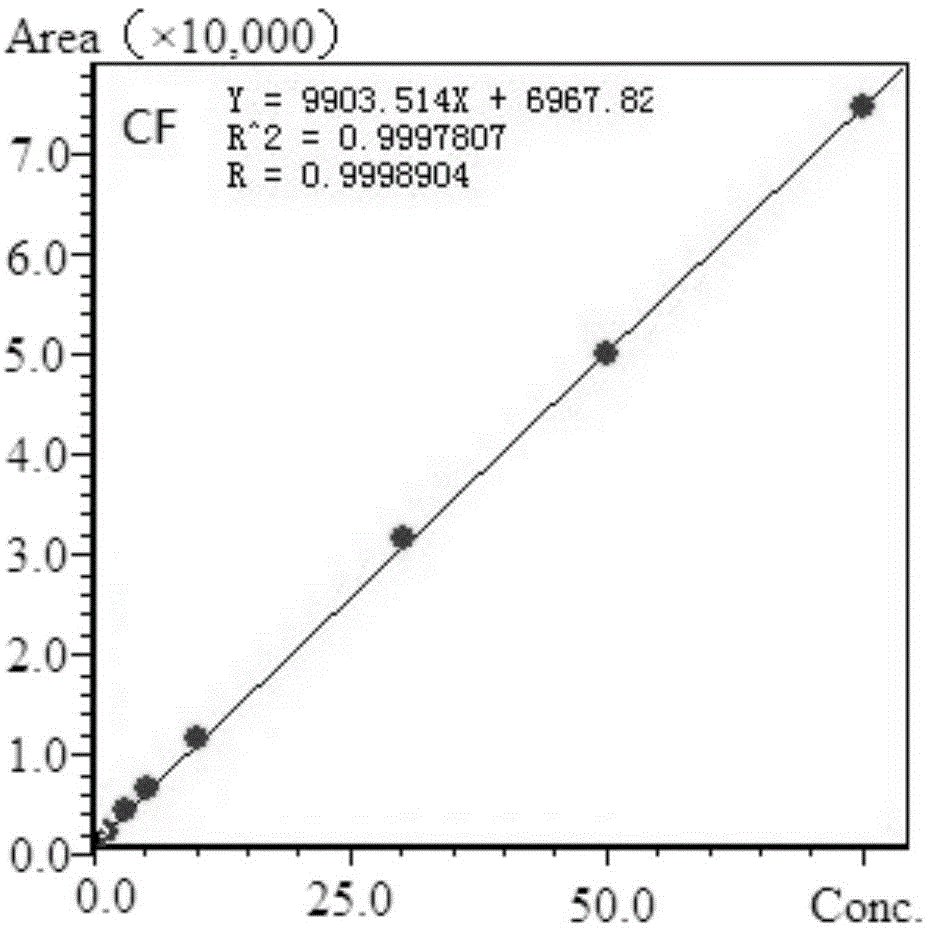An analytical method for the detection of 10 highly toxic disinfection by-products in drinking water
A technology of disinfection by-products and analysis methods, which is applied in the fields of municipal water supply and drainage and environmental engineering, can solve problems such as inability to analyze, and achieve the effects of saving manpower and time, avoiding peak and tailing, and convenient sample testing
- Summary
- Abstract
- Description
- Claims
- Application Information
AI Technical Summary
Problems solved by technology
Method used
Image
Examples
Embodiment 1
[0058] An analytical method for the detection of 10 highly toxic disinfection by-products in drinking water, such as figure 1 As shown, there are three parts including sample pretreatment, instrument condition optimization and operation determination.
[0059] Sample pretreatment includes the selection of the optimal pH value of the water sample and the determination of the operating parameters of the P&T instrument.
[0060] The optimization of instrument conditions also includes the determination of the optimum injection volume and the optimum temperature of the injection port.
[0061] Operational determination also includes determination of working curve, determination of detection limit and determination limit.
[0062] Specific steps are as follows:
[0063] 1 Sample pretreatment
[0064] 1.1 Selection of optimal pH value
[0065] The test is carried out in a flask on a constant temperature magnetic stirrer in the dark, and a certain amount of standard sample is adde...
Embodiment 2
[0091] An analytical method for the detection of 10 highly toxic disinfection by-products in drinking water. The sample is pretreated by purge and trap (P&T), and then analyzed by gas chromatography / mass spectrometry. According to the analysis chromatogram of the sample And the standard working curve of 10 kinds of disinfection by-products to determine the content of 10 kinds of disinfection by-products in the sample, wherein these 10 kinds of disinfection by-products are chloroform, monochlorodibromomethane, dichloromonobromomethane, tribromomethane, dichloronitrate Methyl methane, chloropicrin, dichloroacetone, trichloroacetone, dichloroacetonitrile and trichloroacetonitrile, the method specifically comprises the following steps:
[0092] (1) Adjust the pH of the sample to within the range of 4.5 to 5.0;
[0093] (2) Determine the operating parameters of the purge and trap instrument;
[0094] (3) Determine the operating parameters of the gas chromatograph / mass spectrometer...
PUM
| Property | Measurement | Unit |
|---|---|---|
| length | aaaaa | aaaaa |
Abstract
Description
Claims
Application Information
 Login to View More
Login to View More - R&D
- Intellectual Property
- Life Sciences
- Materials
- Tech Scout
- Unparalleled Data Quality
- Higher Quality Content
- 60% Fewer Hallucinations
Browse by: Latest US Patents, China's latest patents, Technical Efficacy Thesaurus, Application Domain, Technology Topic, Popular Technical Reports.
© 2025 PatSnap. All rights reserved.Legal|Privacy policy|Modern Slavery Act Transparency Statement|Sitemap|About US| Contact US: help@patsnap.com



